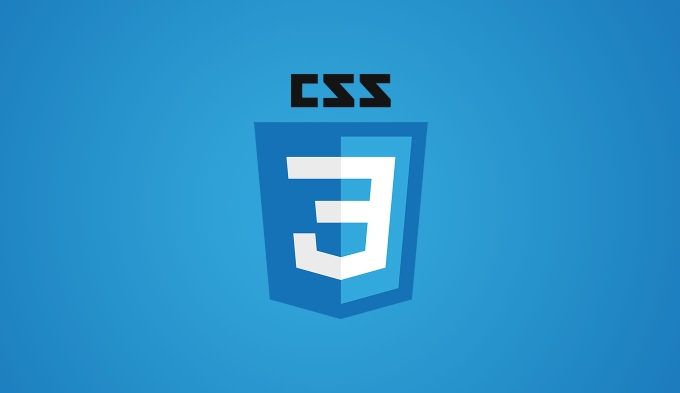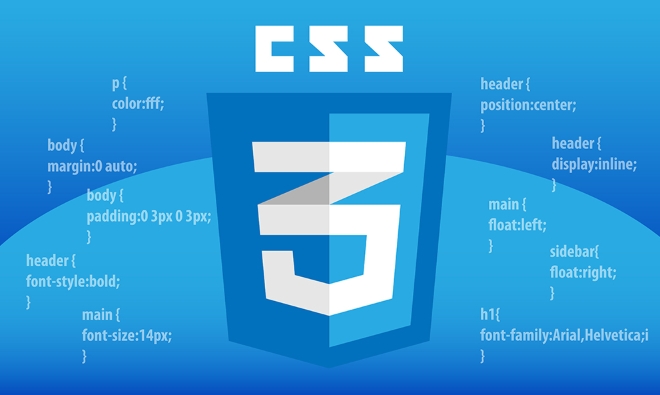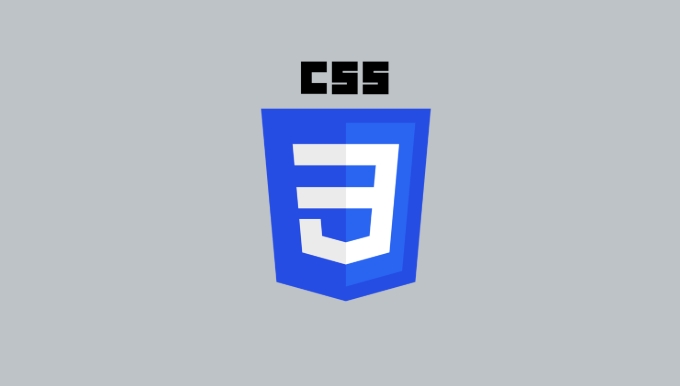 Web Front-end
Web Front-end
 CSS Tutorial
CSS Tutorial
 Maintaining aspect ratios with CSS padding-top hack or aspect-ratio property
Maintaining aspect ratios with CSS padding-top hack or aspect-ratio property
Maintaining aspect ratios with CSS padding-top hack or aspect-ratio property
Jul 08, 2025 am 01:35 AMThere are two ways to maintain element aspect ratio in web layout: 1. Use padding-top tricks; 2. Use the aspect-ratio attribute. The padding-top method achieves proportional control through percentage calculation of placeholding, which has good compatibility but complex structure, and is suitable for block-level elements; the aspect-ratio method is simple and intuitive, supports modern browsers, and can directly set aspect ratios, which are suitable for responsive design and inline elements. If you need to be compatible with old browsers, you can use fallback style in combination with feature query.

Maintaining the aspect ratio of elements in web layout, especially in responsive design, is a common requirement. For example, you want a video container to always maintain a 16:9 ratio, or a picture frame will remain square no matter how large the screen is. There are two common methods at this time: use padding-top to create a "placeholder", or directly use the aspect-ratio attribute supported by modern browsers.

Let’s take a look at how to use these two methods and when to use them more appropriately.

Use padding-top to make the aspect ratio and placeholder
This method is actually a CSS trick, which uses the feature that padding-top percentage is calculated based on the width of the parent container.
For example, if you want to make a 16:9 box:

.aspect-box {
position: relative;
width: 100%;
padding-top: 56.25%; /* 9 / 16 = 0.5625 */
}
.content {
position: absolute;
top: 0;
left: 0;
width: 100%;
height: 100%;
} In this way, .aspect-box will automatically calculate the height based on the width, thereby maintaining a 16:9 ratio. Putting .content inside can fill this fixed-scale space.
The advantage of this method is that it has good compatibility and can also be supported by old browsers. But the disadvantages are also obvious: the structure is a bit complicated, and it needs to be nested with a layer, and it is only suitable for block-level elements and cannot be directly applied to pictures or other inline elements.
Use aspect-ratio to set the aspect ratio directly
After aspect-ratio property of CSS appears, things become much simpler. You can set the aspect ratio directly to an element, such as:
.square {
aspect-ratio: 1 / 1;
width: 100px;
} This way, no matter what the content is, the element will remain square. You can also use width: 100% responsiveness:
.video-container {
aspect-ratio: 16 / 9;
width: 100%;
}The biggest advantage of this method is that it is its simplicity and intuitiveness , without nesting structures or absolute positioning. But it should be noted that not all browsers fully support it, although mainstream modern browsers are no longer a problem.
How to choose: padding-top or aspect-ratio?
- Need to be compatible with old browsers (such as IE)?
Then you still have to use the padding-top method. - Pursuing concise code and clear structure?
It is recommended to useaspect-ratio. - Is the element itself a picture or video?
You can tryaspect-ratiofirst, and then switch back to padding-top if it doesn't work. - Want to do a responsive container wrapping iframe or something?
Both are available, but padding-top is more flexible.
If your project has low compatibility requirements, aspect-ratio is the first choice. If you also want to consider the old browser, you can combine the two and use feature query to determine whether it supports it:
@supports (aspect-ratio: 1/1) {
.box {
aspect-ratio: 16 / 9;
width: 100%;
}
}
/* fallback styles here if needed */Basically that's it. The two methods have their own applicable scenarios, which are not complicated but are easy to ignore details, such as percentage calculation, absolute positioning position control, and browser compatibility issues. Choosing the right method can make your layout easier and more reliable.
The above is the detailed content of Maintaining aspect ratios with CSS padding-top hack or aspect-ratio property. For more information, please follow other related articles on the PHP Chinese website!

Hot AI Tools

Undress AI Tool
Undress images for free

Undresser.AI Undress
AI-powered app for creating realistic nude photos

AI Clothes Remover
Online AI tool for removing clothes from photos.

Clothoff.io
AI clothes remover

Video Face Swap
Swap faces in any video effortlessly with our completely free AI face swap tool!

Hot Article

Hot Tools

Notepad++7.3.1
Easy-to-use and free code editor

SublimeText3 Chinese version
Chinese version, very easy to use

Zend Studio 13.0.1
Powerful PHP integrated development environment

Dreamweaver CS6
Visual web development tools

SublimeText3 Mac version
God-level code editing software (SublimeText3)

Hot Topics
 How can I include CSS only on some pages?
Jun 11, 2025 am 12:01 AM
How can I include CSS only on some pages?
Jun 11, 2025 am 12:01 AM
There are three ways to selectively include CSS on a specific page: 1. Inline CSS, suitable for pages that are not frequently accessed or require unique styles; 2. Load external CSS files using JavaScript conditions, suitable for situations where flexibility is required; 3. Containment on the server side, suitable for scenarios using server-side languages. This approach can optimize website performance and maintainability, but requires balance of modularity and performance.
 Flexbox vs Grid: Understanding the Key Differences in CSS Layout
Jun 10, 2025 am 12:03 AM
Flexbox vs Grid: Understanding the Key Differences in CSS Layout
Jun 10, 2025 am 12:03 AM
Flexboxisidealforone-dimensionallayouts,whileGridsuitstwo-dimensional,complexlayouts.UseFlexboxforaligningitemsinasingleaxisandGridforprecisecontroloverrowsandcolumnsinintricatedesigns.
 Creating an Auto-Closing Notification With an HTML Popover
Jun 10, 2025 am 09:45 AM
Creating an Auto-Closing Notification With an HTML Popover
Jun 10, 2025 am 09:45 AM
The HTML popover attribute transforms elements into top-layer elements that can be opened and closed with a button or JavaScript. Popovers can be dismissed a number of ways, but there is no option to auto-close them. Preethi has a technique you can u
 What is 'render-blocking CSS'?
Jun 24, 2025 am 12:42 AM
What is 'render-blocking CSS'?
Jun 24, 2025 am 12:42 AM
CSS blocks page rendering because browsers view inline and external CSS as key resources by default, especially with imported stylesheets, header large amounts of inline CSS, and unoptimized media query styles. 1. Extract critical CSS and embed it into HTML; 2. Delay loading non-critical CSS through JavaScript; 3. Use media attributes to optimize loading such as print styles; 4. Compress and merge CSS to reduce requests. It is recommended to use tools to extract key CSS, combine rel="preload" asynchronous loading, and use media delayed loading reasonably to avoid excessive splitting and complex script control.
 How to use Lotties in Figma
Jun 14, 2025 am 10:17 AM
How to use Lotties in Figma
Jun 14, 2025 am 10:17 AM
In the following tutorial, I will show you how to create Lottie animations in Figma. We'll use two colorful designs to exmplify how you can animate in Figma, and then I'll show you how to go from Figma to Lottie animations. All you need is a free Fig
 Breaking Boundaries: Building a Tangram Puzzle With (S)CSS
Jun 13, 2025 am 11:33 AM
Breaking Boundaries: Building a Tangram Puzzle With (S)CSS
Jun 13, 2025 am 11:33 AM
We put it to the test and it turns out Sass can replace JavaScript, at least when it comes to low-level logic and puzzle behavior. With nothing but maps, mixins, functions, and a whole lot of math, we managed to bring our Tangram puzzle to life, no J
 External vs. Internal CSS: What's the Best Approach?
Jun 20, 2025 am 12:45 AM
External vs. Internal CSS: What's the Best Approach?
Jun 20, 2025 am 12:45 AM
ThebestapproachforCSSdependsontheproject'sspecificneeds.Forlargerprojects,externalCSSisbetterduetomaintainabilityandreusability;forsmallerprojectsorsingle-pageapplications,internalCSSmightbemoresuitable.It'scrucialtobalanceprojectsize,performanceneed
 Does my CSS must be on lower case?
Jun 19, 2025 am 12:29 AM
Does my CSS must be on lower case?
Jun 19, 2025 am 12:29 AM
No,CSSdoesnothavetobeinlowercase.However,usinglowercaseisrecommendedfor:1)Consistencyandreadability,2)Avoidingerrorsinrelatedtechnologies,3)Potentialperformancebenefits,and4)Improvedcollaborationwithinteams.





